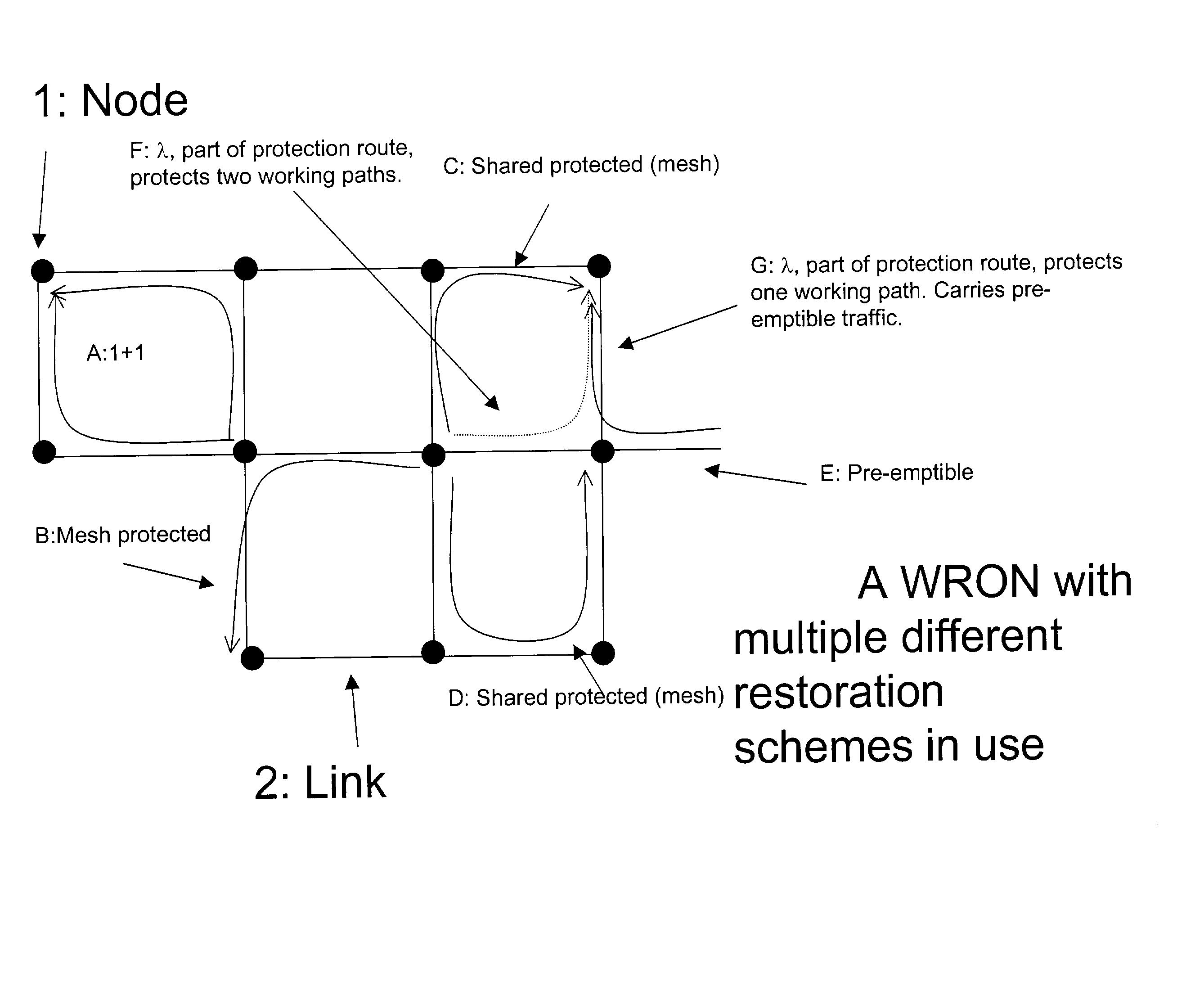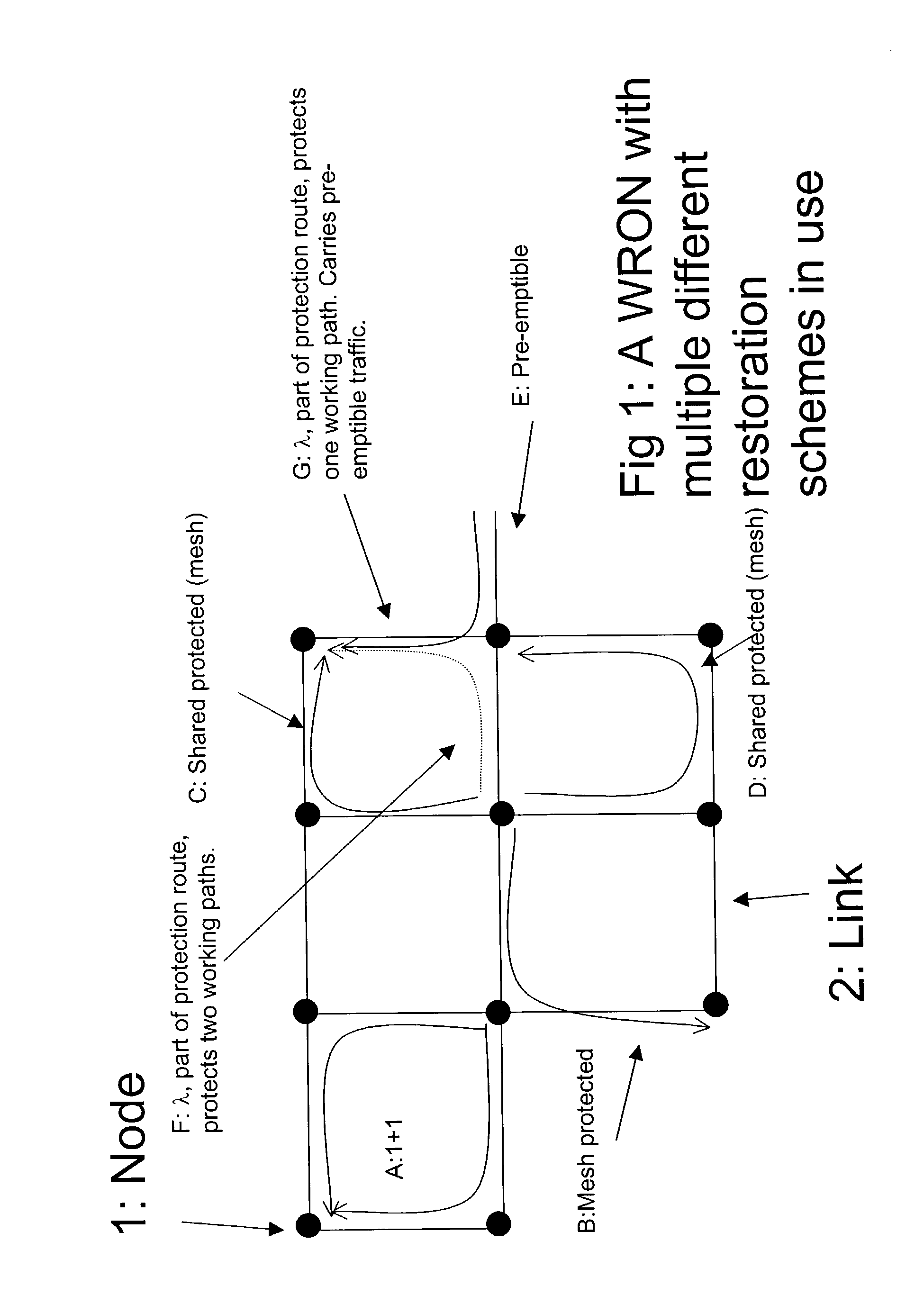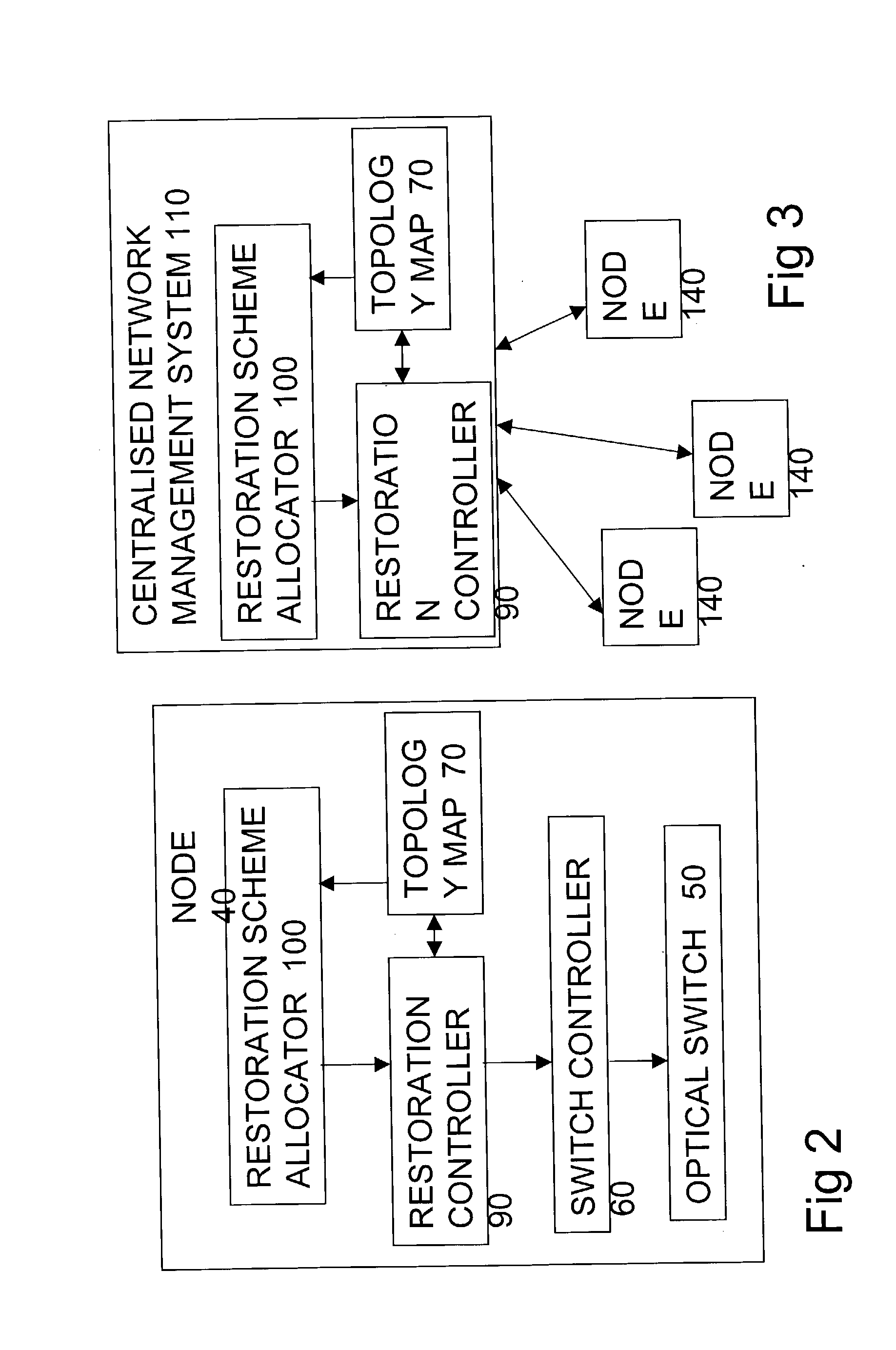Differentiated resilience in optical networks
a technology of optical networks and resilience, applied in the direction of lasers, electromagnetic transmission, transmission, etc., can solve the problems of clumsy static network design and provisioning mechanisms, inability to adapt to the drastic evolution of internet infrastructure, and inability to connect,
- Summary
- Abstract
- Description
- Claims
- Application Information
AI Technical Summary
Benefits of technology
Problems solved by technology
Method used
Image
Examples
Embodiment Construction
) Requirement "Path from A->Z with 99.9999% availability that avoids city X": The system observes using the topology map that it can find routes from A to Z (avoiding X) of approx 3000 km. Fault occurrence on the network is retrieved from a database as 10 faults / fibre / 1000 km / year. Therefore, predicted fault rate on a path of this distance is 30 faults / year. Time to repair for a fault is retrieved from a database as 2 hours (to simplify this illustration, this is assumed to have a standard deviation of 0). Therefore, the expected incidence of simultaneous independent faults (it is expected that one fault can't cause both to fail) on two parallel routes is approximately 17 seconds / year, which is rather less than the committed 31 seconds / year--at least, when averaged over a long enough period. Therefore a standard 1+1 scheme provides more than enough resilience. However, a shared protection scheme sharing protection with another working path of similar link has an expected outage of 3...
PUM
| Property | Measurement | Unit |
|---|---|---|
| time | aaaaa | aaaaa |
| time | aaaaa | aaaaa |
| resilience | aaaaa | aaaaa |
Abstract
Description
Claims
Application Information
 Login to View More
Login to View More - R&D
- Intellectual Property
- Life Sciences
- Materials
- Tech Scout
- Unparalleled Data Quality
- Higher Quality Content
- 60% Fewer Hallucinations
Browse by: Latest US Patents, China's latest patents, Technical Efficacy Thesaurus, Application Domain, Technology Topic, Popular Technical Reports.
© 2025 PatSnap. All rights reserved.Legal|Privacy policy|Modern Slavery Act Transparency Statement|Sitemap|About US| Contact US: help@patsnap.com



